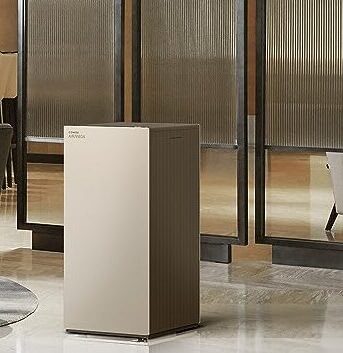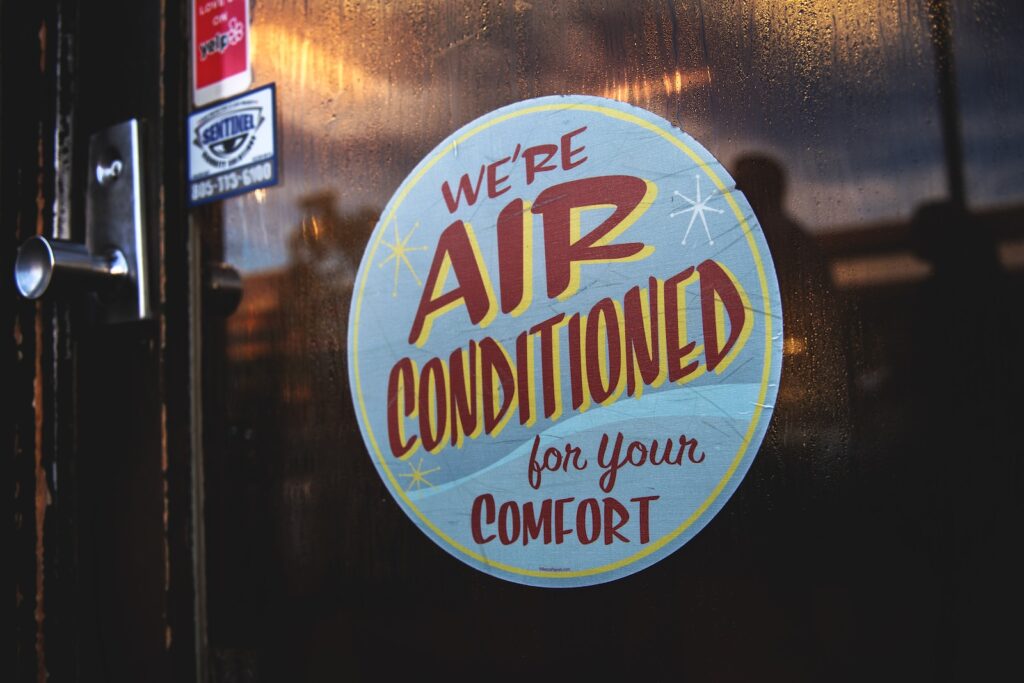Rated & Reviewed is reader-supported. When you buy through links on our site, we may earn an affiliate commission. Learn more.
The diverse landscape of air purifier technologies has revolutionized indoor air quality management. With a plethora of options available, understanding these technologies is essential for making informed choices that align with specific air purification needs. This article unveils the intricacies of various air purifier technologies, shedding light on their mechanisms, applications, and potential benefits.
Comparison of Air Purifier Technologies
| Technology | Key Features | Advantages | Considerations |
|---|---|---|---|
| HEPA Filters | Particle capture, ideal for allergens | Effective against particles, versatile | Limited impact on odors and gases |
| UV-C Technology | Microorganism neutralization | Kills bacteria, viruses, and mold | Safety concerns, proper usage necessary |
| Activated Carbon Filters | Odor and VOC adsorption | Eliminates odors, improves air freshness | Less effective against particles |
| Ionic and Electrostatic Purifiers | Charged particles capture | Effective particle removal, no filters | Potential ozone generation, respiratory concerns |
| Ozone Generators | Odor elimination through ozone | Strong odor removal, versatile | Health risks due to ozone exposure |
| Polarized-Media Electronic Filters | Enhanced particle capture | Captures smaller particles, efficient | Requires maintenance for consistent performance |
| Hybrid Air Purifiers | Combination of multiple technologies | Comprehensive air cleaning | Higher initial cost, complexity |
Common Types of Air Purifier Technologies
Air purifiers employ a range of technologies to address different pollutants. Here’s a glimpse into some common options:
- HEPA Filters: Renowned for their efficiency, HEPA filters capture particles as small as 0.3 micrometers, making them a stalwart against allergens like dust, pollen, and pet dander.
- UV-C Technology: Ultraviolet-C light neutralizes microorganisms by damaging their DNA, rendering them inactive and unable to reproduce.
- Activated Carbon Filters: These filters excel at adsorbing odors, smoke, and volatile organic compounds (VOCs), leaving the air fresher and more pleasant.
HEPA Filters: The Gold Standard in Air Purification

HEPA filters have set the benchmark for effective air purification. Comprising densely woven fibers, they skillfully capture particles, preventing them from recirculating in the air. While they excel at trapping allergens, their focus on particle filtration makes them less effective against odors and gases. HEPA filters have become a staple in air purifiers, serving as the foundation for cleaner indoor air.
UV-C Technology: Disrupting Microorganisms
UV-C technology introduces a unique approach to air purification. By emitting ultraviolet light with wavelengths between 200 and 280 nanometers, it disrupts the genetic material of microorganisms. This prevents their replication and renders them harmless. While UV-C technology is efficient against bacteria and viruses, it requires proper implementation and safety considerations to ensure optimal results without harm to humans or pets.
Activated Carbon Filters: Tackling Odors and Chemicals
Activated carbon filters address a different facet of indoor air quality. The porous structure of activated carbon effectively adsorbs gases and odorous molecules. This makes them invaluable for eliminating cooking odors, tobacco smoke, and volatile organic compounds (VOCs) released by household items. By targeting both particles and odors, activated carbon filters create a more enjoyable living environment.
Ionic and Electrostatic Purifiers: Charging Up Air Cleaning
Ionic and electrostatic purifiers use charged particles to attract and trap pollutants. These purifiers release ions into the air, creating an electrostatic charge on particles. The charged particles are then attracted to surfaces or collector plates within the purifier. While they can effectively remove particles from the air, concerns about ozone production and their potential impact on respiratory health should be considered.
Ozone Generators: Controversial Air Purification
Ozone generators employ ozone to neutralize odors and pollutants. While they can be effective at eliminating strong odors, they are highly controversial due to potential health risks. Ozone, a lung irritant, can exacerbate respiratory issues. As such, many experts advise against using ozone generators for indoor air purification.
Technology Applications and Benefits
| Technology | Applications | Benefits |
|---|---|---|
| HEPA Filters | Allergen removal, general particle capture | Reduces allergen exposure, improves air quality |
| UV-C Technology | Microorganism neutralization | Kills harmful bacteria and viruses |
| Activated Carbon Filters | Odor and VOC removal | Eliminates unpleasant odors and chemicals |
| Ionic and Electrostatic Purifiers | Particle capture, no filters | Efficiently removes particles without filter |
| Ozone Generators | Strong odor elimination | Eliminates persistent odors effectively |
| Polarized-Media Electronic Filters | Enhanced particle capture | Captures smaller particles effectively |
| Hybrid Air Purifiers | Comprehensive air cleaning | Addresses various pollutants in one device |
Polarized-Media Electronic Filters: Enhanced Particle Capture
Polarized-media electronic filters enhance particle capture using an electric charge. These filters create an electric field that charges particles, attracting them to a collector plate. They are particularly effective at capturing smaller particles that might evade traditional filters. While they can be efficient, proper maintenance is necessary to ensure consistent performance.
Hybrid Air Purifiers: The Best of Both Worlds
Hybrid air purifiers combine multiple technologies to offer comprehensive air cleaning. These models often pair HEPA filters with activated carbon filters, UV-C technology, or other methods. By synergizing different approaches, hybrid purifiers address a broader spectrum of pollutants, delivering enhanced indoor air quality.
Eco-Friendly and Sustainable Options
As environmental consciousness grows, eco-friendly and sustainable air purifier options are gaining prominence. These options focus on energy efficiency, recyclable materials, and reduced carbon footprints. Considerations extend beyond air quality improvement, encompassing the broader impact on the environment.
In the world of air purification, a diverse array of technologies caters to varying needs. From HEPA filters to UV-C technology, each approach tackles pollutants in its unique way. By understanding these technologies, consumers can make informed choices, contributing to healthier and more pleasant indoor living environments.
Conclusion
In the pursuit of cleaner, healthier indoor environments, the world of air purifier technologies unveils a realm of possibilities. From the efficiency of HEPA filters to the innovative disruption of UV-C technology and the versatile prowess of activated carbon filters, each approach addresses specific air quality concerns. Ionic and electrostatic purifiers harness the power of charged particles, while polarized-media electronic filters elevate particle capture to new heights.
As we navigate the diverse landscape, it’s crucial to consider the implications of our choices. Ozone generators, while effective at odor elimination, pose potential health risks. Hybrid air purifiers combine the strengths of multiple technologies, providing a comprehensive solution for improved indoor air quality. Moreover, the emergence of eco-friendly and sustainable options underscores the importance of responsible air purification.
Understanding the nuances of these technologies empowers us to make informed decisions that align with our specific needs and values. Whether combating allergies, neutralizing odors, or safeguarding against microorganisms, the world of air purifiers offers tailored solutions for every environment. By harnessing the power of science, innovation, and responsible practices, we can create indoor spaces that are not only cleaner but also conducive to our well-being.
Ultimately, the journey towards cleaner indoor air is a blend of science, technology, and conscious choices. By embracing these advancements and applying them to our living spaces, we embark on a path towards improved health, comfort, and overall quality of life.
FAQs About Types of Air Purifier Technologies
HEPA Filters FAQs
Q: What makes HEPA filters stand out as a popular choice?
A: HEPA filters are highly efficient in capturing particles as small as 0.3 micrometers, making them effective against allergens like dust, pollen, and pet dander.
Q: Are HEPA filters effective against viruses?
A: Yes, HEPA filters can capture particles that carry viruses, but they are most effective against larger particles. Combining HEPA filters with other technologies can enhance virus removal.
Q: Can HEPA filters address strong odors like cooking smells?
A: HEPA filters are primarily designed for particle filtration and may have limited effectiveness against strong odors. Activated carbon filters are better suited for odor removal.
UV-C Technology FAQs
Q: How does UV-C technology neutralize bacteria and viruses?
A: UV-C technology emits ultraviolet light with wavelengths between 200 and 280 nanometers, damaging the DNA of microorganisms and rendering them unable to replicate.
Q: Are UV-C air purifiers safe for human exposure?
A: UV-C air purifiers are generally safe when used within guidelines. However, prolonged direct exposure to UV-C light can have adverse effects on skin and eyes.
Q: What types of microorganisms can UV-C technology target?
A: UV-C technology can effectively neutralize a wide range of microorganisms, including bacteria, viruses, and mold spores.
Activated Carbon Filters FAQs
Q: Do activated carbon filters eliminate all types of odors?
A: Activated carbon filters excel at removing odors caused by volatile organic compounds (VOCs), chemicals, and gases. However, they may have limited effectiveness against certain strong or persistent odors.
Q: Can activated carbon filters remove chemical fumes from indoor air?
A: Yes, activated carbon filters are effective at adsorbing chemical fumes and volatile organic compounds (VOCs), improving indoor air quality and reducing exposure.
Q: How often should activated carbon filters be replaced?
A: The replacement frequency of activated carbon filters depends on factors such as the level of odors and chemicals in your environment. Generally, they are replaced every 6 to 12 months.
Ionic and Electrostatic Purifiers FAQs
Q: Do ionic and electrostatic purifiers produce ozone?
A: Some ionic and electrostatic purifiers can generate small amounts of ozone as a byproduct. It’s essential to choose models that produce minimal ozone to avoid potential health concerns.
Q: Are there any health concerns associated with ionizers?
A: High ozone levels from ionizers can irritate the lungs and worsen respiratory conditions. Opt for certified ionizers that adhere to safety standards.
Q: How do these purifiers affect respiratory health?
A: While ionizers can help remove particles from the air, concerns about ozone production and its impact on respiratory health exist. Proper usage and moderation are recommended.
Ozone Generators FAQs
Q: Can ozone generators effectively remove strong odors?
A: Ozone generators can eliminate strong odors by oxidizing the molecules causing the smell. However, they are controversial due to potential health risks associated with ozone exposure.
Q: What are the health risks of using ozone generators?
A: Ozone exposure can lead to respiratory irritation, worsen existing lung conditions, and potentially cause long-term health problems. Ozone generators should be used with caution or avoided.
Q: Are there safer alternatives to ozone generators?
A: Yes, alternative technologies like activated carbon filters, HEPA filters, and UV-C technology offer effective odor removal without the risks associated with ozone generators.
Polarized-Media Electronic Filters FAQs
Q: How do polarized-media electronic filters capture particles?
A: Polarized-media electronic filters create an electric field that charges particles, attracting them to collector plates. This enhances particle capture and air purification.
Q: Are these filters effective against allergens?
A: Yes, polarized-media electronic filters are efficient at capturing allergens and particles, contributing to improved indoor air quality.
Q: Do polarized-media filters require special maintenance?
A: Regular maintenance involves cleaning or replacing the collector plates to ensure consistent performance. Refer to the manufacturer’s guidelines for proper upkeep.
Hybrid Air Purifiers FAQs
Q: What advantages do hybrid air purifiers offer?
A: Hybrid air purifiers combine multiple technologies to offer comprehensive air cleaning, addressing a wide range of pollutants and improving overall indoor air quality.
Q: Can hybrid models replace individual air purifiers?
A: Depending on the specific hybrid model and its capabilities, it’s possible for some hybrid air purifiers to replace the need for multiple individual units.
Q: How do I choose the right hybrid air purifier for my needs?
A: Consider your specific air quality concerns, room size, and the technologies that matter most to you. Research and compare hybrid models to find the best fit for your requirements.
Amazon and the Amazon logo are trademarks of Amazon.com, Inc, or its affiliates.


